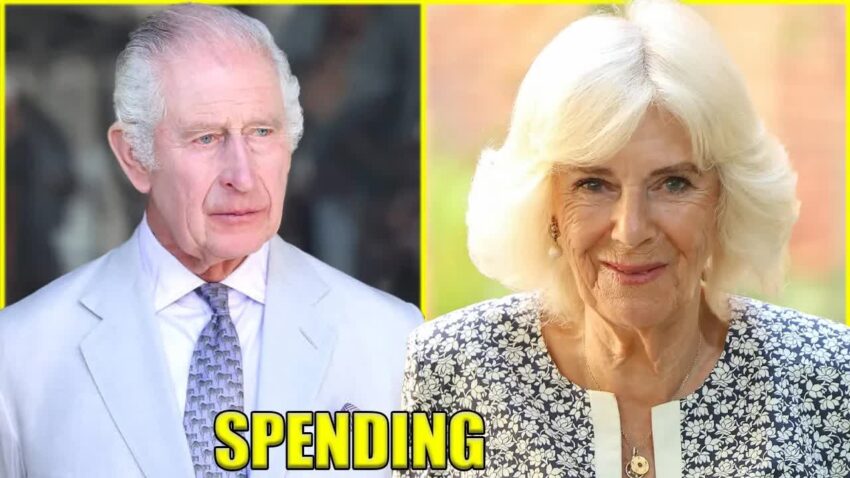The British Royal Family is currently navigating the choppy waters of modernity with a blend of charm and controversy.
King Charles III and his entourage have become subjects of both amusement and frustration as they attempt to connect with a public that is becoming increasingly skeptical of their lavish lifestyle.
The question on everyone’s lips is simple yet profound: how much of their immense wealth trickles back to the taxpayers who fund their extravagant existence?
The Sovereign Grant, essentially the royal family’s allowance from the Crown Estate, amounts to hundreds of millions each year.
This financial cushion allows them to live in the lap of luxury while many citizens are tightening their belts amid a cost-of-living crisis.
The stark contrast between the Royals’ opulent lifestyle and the everyday struggles of ordinary Britons raises eyebrows and fuels public discontent.
The royal household itself resembles a small army, complete with personal aides, security details, and a plethora of administrative staff.
The sheer scale of this operation is enough to make any taxpayer cringe, especially when it seems that such expenses only serve to highlight the monarchy’s detachment from the realities faced by the average citizen.
It’s almost as if they believe that a hefty expense account can obscure their disconnect, but the public isn’t buying it.
Renovations and upkeep of royal residences like Buckingham Palace and Windsor Castle are often prioritized over the needs of the nation.
These historic landmarks, while undoubtedly beautiful, seem more like royal playgrounds than national treasures.
Can we really justify spending millions to maintain such grandeur when so many are struggling to make ends meet?
The optics are troubling, to say the least.
When it comes to state visits and official engagements, the costs can be staggering.
These aren’t just casual trips; they’re elaborate productions involving five-star accommodations and extensive security measures.
Are these journeys genuinely about promoting Britain, or are they merely opportunities for the Royals to collect stamps in their passports?
The line between duty and self-indulgence appears increasingly blurred.
Philanthropy is another area where King Charles and Camilla seek to project an image of public service.
However, their charitable endeavors often come across as carefully orchestrated PR campaigns rather than genuine acts of goodwill.
It feels somewhat disingenuous when they host charity events funded by taxpayer money, as if they’re throwing a party to showcase their own benevolence while living off public funds.
With grand banquets and state ceremonies, the Royals maintain a carefully crafted image that seems at odds with the current economic climate.
Many wonder why the monarchy continues to indulge in such extravagance while ordinary citizens grapple with financial hardships.
If they truly want to connect with the public, perhaps a humble bake sale would resonate more than a lavish banquet.
Despite King Charles’s promises of a more transparent monarchy, the question remains: can the institution genuinely transform?
The public’s skepticism is palpable, particularly when it comes to Camilla, whose attempts at engaging with the masses often feel staged.
Her persona sometimes resembles that of a reality TV star—fascinating yet awkward.
The public sees through her efforts, and the laughter is often more mocking than admiring.
As the couple juggles their royal responsibilities, the gap between their lavish lifestyle and the struggles of everyday citizens becomes increasingly apparent.
While they may strive to appear relatable, their actions often suggest otherwise.
The public’s desire for authenticity clashes with the Royals’ traditional image, leaving many wondering if the monarchy can truly modernize.
Camilla’s efforts to portray herself as a down-to-earth monarch often miss the mark.
Her presence at charity events feels more like a performance than a genuine connection with the people.
The irony is not lost on the public; how can she claim to relate to ordinary citizens while living in a world of privilege?
Each attempt to engage feels rehearsed, leaving many to roll their eyes rather than applaud.
In contrast, the younger generation of royals, particularly William and Catherine, seems to embody a more relatable and empathetic approach.
They are forging genuine connections with the community, advocating for mental health, and striving to be seen as accessible figures.
Their efforts stand in stark contrast to the traditional image represented by Charles and Camilla, suggesting a potential shift in the monarchy’s future.
While the monarchy grapples with its identity, William and Catherine appear poised to lead the way into a new era.
Their sincerity and relatability resonate with a public yearning for authenticity.
As the Royal Family navigates this delicate balance between tradition and modernity, one thing is clear: the path forward will require more than just a polished exterior.
It demands genuine engagement and a commitment to understanding the lives of the people they represent.
